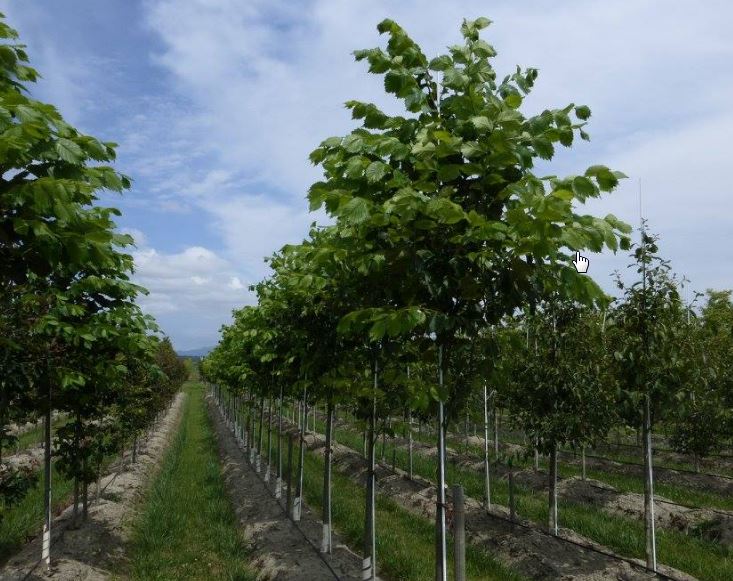Princeton Elm
Ulmus americana 'Princeton' The magnificent Princeton elm, Ulmus america 'Princeton' is the ideal tree to plant where large soil volume and above ground space is available. This is a true American elm, not a hybrid, but selected from a specimen around 1922 and developed by Princeton Nurseries. It has a proven record of Dutch elm resistance and longevity on the street. Ironically, the Dutch Elm Disease that decimated most elm trees in the US was not introduced into the US until about 10 years later, and Princeton elm trees planted before this time are still around today. This selection is also resistant to the elm leaf beetle but may be susceptible to phloem necrosis and wet wood.
The magnificent Princeton elm, Ulmus america 'Princeton' is the ideal tree to plant where large soil volume and above ground space is available. This is a true American elm, not a hybrid, but selected from a specimen around 1922 and developed by Princeton Nurseries. It has a proven record of Dutch elm resistance and longevity on the street. Ironically, the Dutch Elm Disease that decimated most elm trees in the US was not introduced into the US until about 10 years later, and Princeton elm trees planted before this time are still around today. This selection is also resistant to the elm leaf beetle but may be susceptible to phloem necrosis and wet wood.
The Princeton elm, like most other elms, are fast growing trees. In nursery production under ideal conditions, we quickly learned that they had to be pruned more than once per year in youth to maintain acceptable structure. Once established they can become leggy and almost weeping in youth. Anyone planting elms must understand and commit to structural and subordinate pruning. These trees respond well to pruning and will compartmentalize quickly from mechanical or storm damage.
The Princeton American elm has large alternate simple leaves, ovate and oblong 3 to 6 inches long and 1 to 3 inches wide. They are possibly one of the most easily recognized leaves of any tree species. Both leaf ends are acuminate- tapering to a point, but unequal at the base, doubly serrate, lustrous dark green, rough or smooth on top and pubescent or nearly glabrous beneath. The structure of the Princeton elm is upright, vase shape with long reaching limbs. They are most magnificent when trained with a high branch structure so they form a wide tall canopy that can reach 60 to 80 feet tall in older age.
They grow best in deep rich moist soil but have been known to tolerate both wet and dry conditions. We have found that all elms transplant easily except while in leaf, so dormant transplanting or root pruned trees for summer digs is recommended. The root system is said to be wide, shallow and fibrous with some potential for infrastructure damage in narrower planting strips. Root barriers may prevent or prolong that possibility.
There are many new elm cultivars that are in nursery production today but few if any that have this long a proven track record. However, these new elm cultivars may have a smaller or narrower form or a unique character making them more suitable for limited locations. But remember to keep the Princeton American Elm on your large street tree list.
As always, let me know your experience with this tree.
ISA Certified Arborist #0135
ASCA Registered Consulting Arborist #356 CLICK HERE FOR MORE TREE PROFILES
Certified Tree Risk Assessor #PNW-0327
Mount Vernon, WA 98273
(O) 360-428-5810
(M) 360-770-9921
(F) 360-428-1822
sales@urbanforestnursery.com


